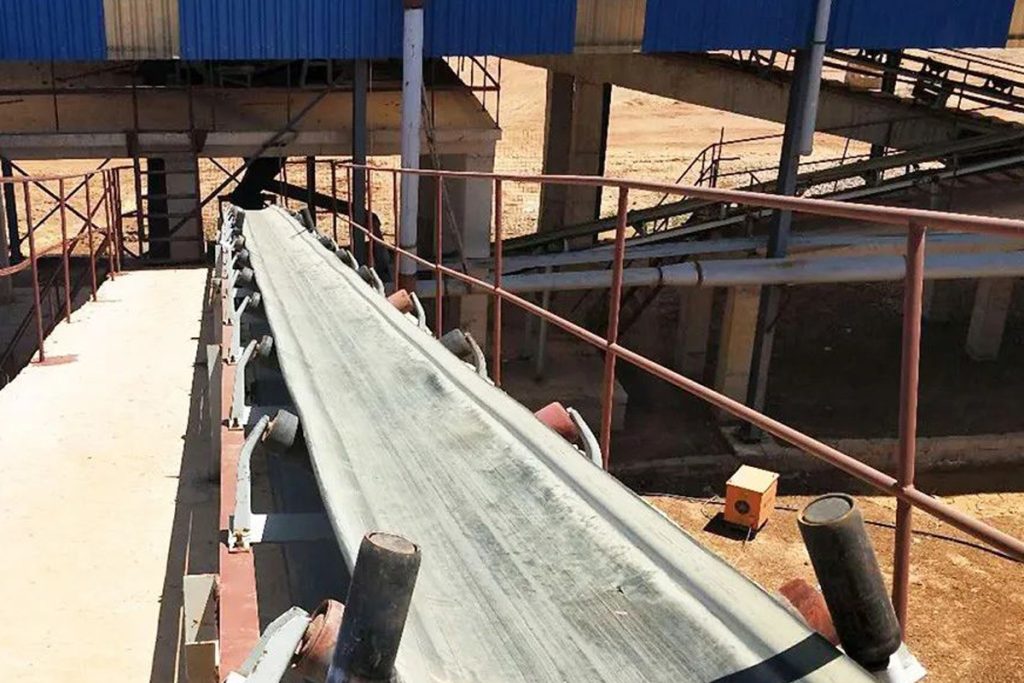Belt conveyors, a type of conveyor vibration system, are the backbone of various industries, facilitating the seamless movement of materials and products across various stages of production and distribution. At the heart of this efficient process lies the head pulley, a component that plays a pivotal role in propelling the conveyor belt forward. Recognizing the significance of the head pulley, industries commonly employ a practice that involves wrapping rubber around it to ensure uninterrupted operation and optimize conveyor performance.
Belt conveyors serve as the lifelines of industries, efficiently transporting materials and products. The crucial role of head pulleys, or rollers, in propelling the conveyor belt forward cannot be understated. To ensure seamless operation, rubber winding around the head pulley is a common practice. This article delves into the significance of head pulley rubber winding, the types of rubbers used, and their diverse applications.
The Role of the Head Pulley : Powering the Conveyor System
- Primary Driving Force: The head pulley, often referred to as the drive pulley, is strategically positioned at the conveyor’s terminal point. It serves as the primary driving force that imparts motion to the conveyor belt, propelling materials along their designated path.
- Tension Distribution: The head pulley also contributes to the proper distribution of tension across the conveyor belt. Tension is crucial for maintaining belt integrity and preventing slippage, ensuring the safe and efficient transport of materials.
- Counteracting Friction: Friction between the belt and the head pulley can slow down the conveyor’s operation and increase energy consumption. The head pulley’s design and the wrapping of rubber help mitigate this friction, promoting smoother movement.
The Power of Rubber Winding
The head pulley, located at the forefront of the conveyor, imparts motion to the belt, driving materials along the conveyor path. However, challenges such as slippage and pulley spinning can arise, especially in lengthy conveyor systems or when transporting materials on slopes. Rubber winding around the head pulley serves as a preventive measure to counter these issues and maintain consistent belt movement.
Types of Rubber Winding:
- Double Helical: In this rubber winding technique, ditches on the rubber are angled acutely towards the conveyor’s moving direction. This design effectively prevents belt slipping, ensuring a reliable grip. However, it’s important to note that double helical rubber winding is suitable only for belt conveyors with a unidirectional rotation. It cannot be applied to conveyors that rotate in both forward and reverse directions.
- Transverse: Transverse rubber winding involves ditches oriented solely in the transverse direction, aligned with the conveyor’s movement. This technique is particularly beneficial for lengthy and wide belt conveyors operating on flat paths. Unlike double helical winding, the transverse approach is not influenced by the rotation direction of the head pulley. It can be applied to conveyors that rotate in both forward and reverse directions.
- Flat Rubber: Flat rubber winding entails winding rubber without ditches. This technique is often employed in inclined transportation scenarios, especially with resin belt conveyors. The choice of flat rubber material may differ from the materials used in the previous two methods. Similar to transverse winding, flat rubber winding is versatile and not restricted by the rotation direction of the head pulley. It can be implemented in conveyors with bidirectional rotation.
Implementing Rubber Wrapping : Best Practices and Considerations
- Material Selection: The choice of rubber for wrapping is critical. It should be durable, wear-resistant, and capable of withstanding the operational demands and environmental conditions of the specific industry.
- Precise Installation: Proper installation of the rubber layer is essential to ensure uniform coverage and avoid imbalance, which could lead to vibrations and further complications.
- Maintenance Regimen: Regular inspection and maintenance of the rubber-wrapped head pulley are essential. Wear and tear should be monitored, and replacements should be conducted promptly.

Applications and Considerations of Rubber Winding
- Conveyor Length and Slope: The choice of rubber winding type depends on various factors, including the length of the conveyor and the presence of slopes. Double helical winding offers optimum grip and is ideal for unidirectional conveyors. Transverse winding is suitable for lengthy conveyors on flat paths, while flat rubber winding is favored for inclined transportation, often involving resin belt conveyors.
- Rotation Direction: Considering the rotation direction of the head pulley is crucial in selecting the appropriate rubber winding technique. Double helical winding is limited to unidirectional conveyors, while both transverse and flat rubber winding can accommodate bidirectional rotation.
Conclusion
The intricate dance of a belt conveyor relies on the effective interplay of its components. Among them, the head pulley stands as a critical element, propelling the conveyor belt forward. The application of rubber winding around the head pulley mitigates troubles caused by slipping and pulley spinning, ensuring smooth and efficient operation.
Depending on factors such as conveyor length, slope, and rotation direction, the choice between double helical, transverse, and flat rubber winding techniques varies. Ultimately, the judicious implementation of rubber winding optimizes conveyor performance, contributing to the seamless flow of materials within industrial processes.
Belt conveyors are the lifeline of industries, ensuring the efficient movement of materials and products that drive economies forward. Within these conveyor systems, the head pulley stands as a central force, propelling the belt and materials along their path. The practice of wrapping rubber around the head pulley emerges as a solution to enhance this process. By providing improved traction, reducing wear and noise, and protecting materials, rubber wrapping contributes significantly to the efficiency, longevity, and safety of conveyor operations.
As industries continue to evolve and seek ways to optimize their processes, recognizing the pivotal role of the head pulley and implementing best practices like rubber wrapping will remain essential. The fusion of technology, engineering, and innovation continues to propel conveyor systems into the future, ensuring that they remain the driving force behind industrial progress.
